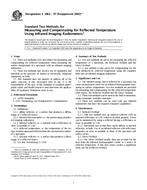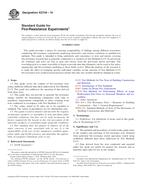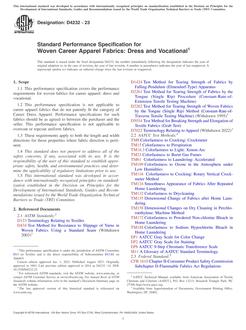1.1 This specification covers powder metallurgy (PM) structural components fabricated from commercially pure (CP) titanium powder mixed with master alloy powder and elemental powders in appropriate quantity to yield combined material chemical compositions comparable to ingot metallurgy (I/M) alloys Titanium 6A1-4V and Titanium 6A1-6V-2Sn.
1.2 This specification covers the following materials:
1.2.1 Two types depending on alloy composition as detailed in Table 1.
1.2.1.1 Type I is comparable to I/M Ti-6A1-4V.
1.2.1.2 Type II is comparable to I/M Ti-6A1-6V-2Sn.
1.2.2 Two grades of each type that result from the specific titanium powder used are as follows:
1.2.2.1 Grade 1 is made from sponge fines with residual levels of chlorine and sodium.
1.2.2.2 Grade 2 is made from hydride/dehydride (HDH) or other process titanium with significantly lower chlorine and sodium content.
1.2.3 Two classes as a function of density (see Table 2) are as follows:
1.2.3.1 Class A density ratio is 94 % minimum.
1.2.3.2 Class B density ratio is 99 % minimum. (Warning – CP titanium powder may be pyrophoric; its use may involve an explosion hazard.)
1.3 The values stated in inch-pound units are to be regarded as the standard. The SI units given in parentheses are for information only.
1.4 This standard does not purport to address all of the safety concerns, if any, associated with its use. It is the responsibility of the user of this standard to establish appropriate safety and health practices and determine the applicability of regulatory limitations prior to use. Specific precautionary statements are given in 1.2.3.2.
TABLE 1 Chemical Composition Requirements
| Element | Composition, Weight %A | |||
|---|---|---|---|---|
| Grade 1 | Grade 2 | |||
| Type I | Type II | Type I | Type II | |
| Aluminum | 5.50/6.75 | 5.0/6.0 | 5.50/6.75 | 5.0/6.0 |
| Vanadium | 3.50/4.50 | 5.0/6.0 | 3.50/4.50 | 5.0/6.0 |
| Tin | N/AB | 1.5/2.5 | N/AB | 1.5/2.5 |
| Iron | 0.40 max | 0.35/1.0 | 0.40 max | 0.35/1.0 |
| Copper | N/AB | 0.35/1.0 | N/AB | 0.35/1.0 |
| Oxygen, max | 0.30 | 0.30 | 0.30 | 0.30 |
| Hydrogen, max | 0.015 | 0.015 | 0.015 | 0.015 |
| Nitrogen, max | 0.04 | 0.04 | 0.04 | 0.04 |
| Carbon, max | 0.10 | 0.10 | 0.10 | 0.10 |
| Sodium, max | 0.20 | 0.20 | TBDC | TBDC |
| Chlorine, max | 0.20 | 0.20 | TBDC | TBDC |
| Silicon, max | 0.10 | 0.10 | 0.10 | 0.10 |
| Residual elements each, max |
0.10 | 0.10 | 0.10 | 0.10 |
| Residual elements total, max |
0.40 | 0.40 | 0.40 | 0.40 |
| Titanium | remainder | remainder | remainder | remainder |
A For the purpose of determining conformance with this specification, measured values shall be rounded “ to the nearest unit“ in the last right-hand digit used in expressing the specification limit, in accordance with the rounding method of Practice E 29.
B Not applicable.
C Various chloride levels may be available between the standard 0.20 max and the wrought equivalent of 0.001 max. The acceptable level for specific product applications shall be agreed upon between the purchaser and supplier and specified on the purchase order.
TABLE 2 Density Requirements
| Class | Density Ratio min, % |
|---|---|
| A | 94 |
| B | 99 |
Product Details
- Published:
- 11/01/2008
- Number of Pages:
- 3
- File Size:
- 1 file , 75 KB
- Redline File Size:
- 2 files , 140 KB


